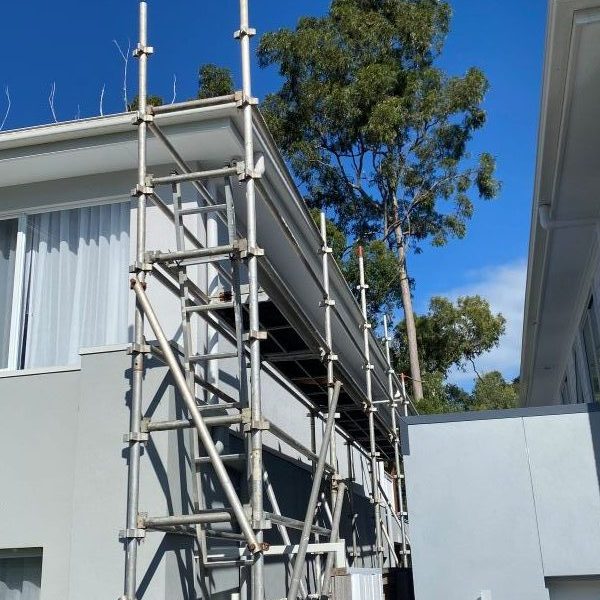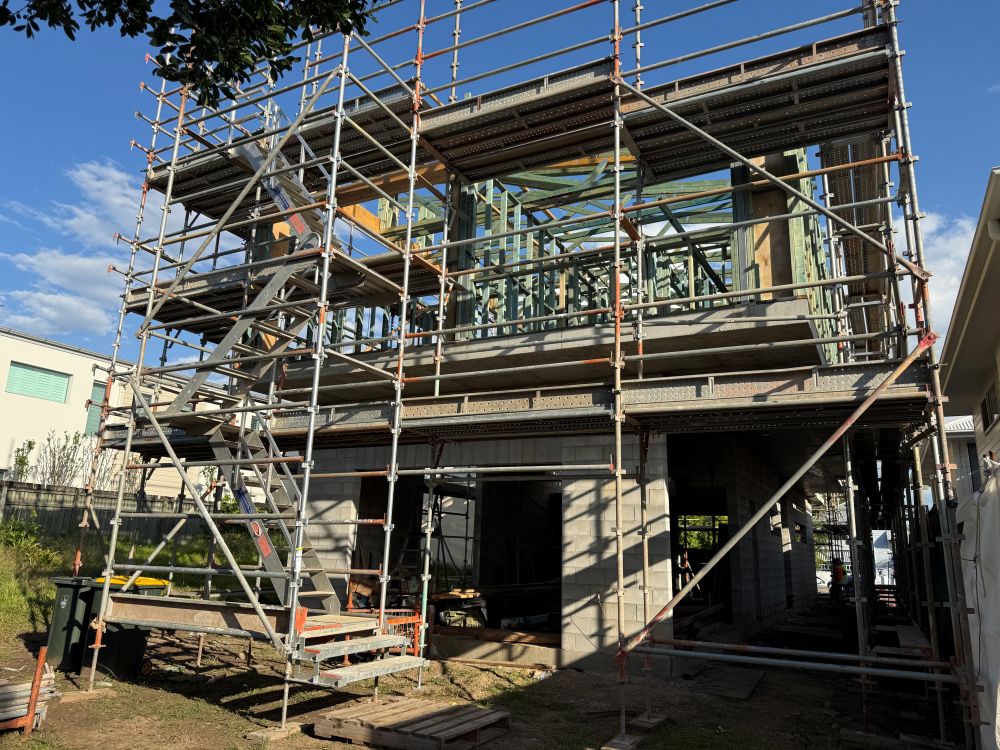Unlocking the Secrets of Scaffold Load Capacity for Enhanced Safety and Compliance in Construction Projects
Scaffold load capacity is a fundamental aspect that determines the utmost weight a scaffold can safely bear during various construction activities. Understanding this critical element is essential for ensuring safety and compliance. There are three primary categories of loads that must be meticulously evaluated:
- The weight of the scaffold itself, commonly referred to as the dead load, which forms the baseline for stability.
- The weight of workers, tools, and materials positioned on the scaffold, known as the live load, which varies significantly depending on the project.
- External forces such as wind, rain, or vibrations that act upon the structure, classified as environmental load, which can dramatically influence the structural integrity of the scaffold.
Comprehending these loads is vital, as they directly impact the overall stress exerted on a scaffold during its operational phase. Adhering to these calculations is not merely a suggestion; it is a legal requirement under Australian law, aimed at safeguarding the well-being of all personnel involved in construction activities.

Mastering Our Scaffold Load and Height Calculator: A Step-by-Step Approach for Optimal Usage
While there is no one-size-fits-all formula applicable to every scaffold configuration, our scaffold calculator provides an intuitive way to achieve precise estimates by simplifying complex variables. This tool is specifically designed for residential builders, homeowners, and scaffold hire professionals operating under the stringent guidelines set by Australian OHS standards.
Step 1: Define the Type of Work
Identify the nature of the work to be performed, which may encompass tasks such as roof restoration, exterior painting, solar panel installation, cladding, or rendering. Understanding the specific requirements of each task is crucial for determining load capacities.
Step 2: Specify the Number of Workers Involved
For instance, you might input two workers who will be actively working simultaneously on the scaffold platform, ensuring that the load calculations accommodate their combined weight.
Step 3: Assess the Weight of Materials Required
This could involve estimating approximately 120 kg worth of rendering materials or tools that will be utilised throughout the course of the project, which is essential for accurate load assessments.
Step 4: Input the Height of the Scaffold Platform
For example, the height could be established at 4.5 metres above ground level, a critical measurement that affects stability and safety considerations.
Upon entering this information, the calculator will provide a recommended scaffold configuration that includes:
- The appropriate duty class (e.g., Light, Medium, or Heavy) suitable for the specific project requirements
- An estimation of the Safe Working Load (SWL) per bay, ensuring compliance with safety standards
- The recommended scaffold type (e.g., aluminium tower or steel frame) tailored to the project
- Essential safety features required (such as guardrails, soleplates, and stabilisers) to enhance worker safety
- Any compliance triggers associated with height (e.g., tie-offs that are necessary for scaffolds exceeding 4 metres)
Understanding the Reasons Behind the Absence of a Universal Load Formula for Scaffolding
Although the scaffold calculator serves as a practical tool for generating estimates, scaffolders and engineers do not rely solely on a singular formula. Several significant factors contribute to this necessity:
- Scaffold systems can differ vastly based on material and design (for example, aluminium, steel, modular, and tube-and-coupler systems), each with unique load characteristics.
- The intended use of the scaffold significantly impacts its load capacity (for instance, painting requires different considerations compared to masonry work).
- Various manufacturers offer different platform strength and component ratings, which can lead to discrepancies in load-bearing capabilities.
Adhering to Industry Standards for Calculating Safe Working Load (SWL)
Professionals frequently reference the following formula as a fundamental guideline for estimating:
Safe Working Load (SWL) per bay = (Platform Load Rating × Safety Factor) – Scaffold Component Weight
Illustrative Example:
- A platform rated for a maximum load of 600 kg
- Applying a 4:1 safety margin: using only 25% of the rating yields 150 kg
- Subtracting the weight of the scaffold structure, which is 100 kg
- The resulting usable working load is 50 kg (this estimation is conservative and may not reflect actual planning needs).
Due to the complexities inherent in real-world conditions, professional scaffolders typically adhere to manufacturer guidelines, engineering tables, and local codes rather than relying solely on this simplified formula.

Implementing Best Practices for Scaffold Evaluations by Industry Professionals
Professional scaffold evaluations generally encompass several critical components, ensuring the utmost safety and compliance:
- Reviewing manufacturer load data alongside verified span ratings for accuracy and reliability
- Calculating the total live, dead, and environmental loads to ensure comprehensive safety
- Ensuring compliance with AS/NZS duty class specifications to align with industry standards
- Obtaining engineering sign-off for any custom or elevated scaffold setups, reinforcing accountability
- Conducting thorough visual and structural inspections prior to scaffold use to identify any potential hazards and mitigate risks
Customising Scaffold Practices to Suit Environmental Conditions and Site-Specific Factors
Addressing Wind Exposure Challenges in Coastal Queensland
In regions classified under wind zones N3 and N4, the lateral forces affecting scaffolds are significantly intensified. Consequently, scaffolds must be secured at shorter intervals, and additional bracing or shade cloth may be necessary, especially during high-wind seasons, to ensure stability and safety.
Considerations for Varying Soil and Ground Conditions
When dealing with unstable or sloped soil conditions, it becomes imperative to employ soleplates and adjustable base jacks to enhance scaffold stability. Furthermore, sites with varying elevations may necessitate the implementation of levelled bay systems to ensure a safe working environment for all personnel involved.
Regulations Governing Work Above Four Metres
In Queensland, any platform exceeding four metres in height requires thorough inspection and certification. A scaffold handover certificate is mandated under the Work Health and Safety Regulation 2011, ensuring compliance with safety standards and regulations.
Essential Safety Regulations Every Construction Site Must Follow
- Work Health and Safety Regulation 2011 (QLD) mandates compliance for all construction activities
- Managing the Risk of Falls at Workplaces (Code of Practice, 2021) outlines necessary safety protocols
- AS/NZS 1576 and AS/NZS 4576 Standards set the benchmark for scaffold safety practices
- High Risk Work Licence (HRWL) is required for any scaffold setup exceeding four metres in height
Site supervisors hold the responsibility of conducting regular inspections, especially following adverse weather events or significant changes to scaffold height or load, to ensure ongoing compliance with established safety regulations.
In-Depth Case Study: Effective Scaffold Application in Robina
In a recent project located in Gold Coast, a homeowner in Robina required scaffolding to carry out repainting and rendering tasks on a two-storey exterior wall. The working height for this undertaking was set at five metres, with two tradespeople utilising approximately 200 kg of rendering materials and tools during the course of the project.
Utilising our scaffold calculator, the recommended configuration was as follows:
- Scaffold class: Medium Duty, deemed suitable for the task at hand
- System type: Steel frame with timber planks, selected for durability and stability
- Additional safety measures: Full edge protection, soleplates for soft earth conditions, and wind mesh to reduce exposure to wind and enhance safety
The scaffold successfully passed all required inspections and adhered to Queensland’s OHS regulations, resulting in zero downtime throughout the duration of the project, showcasing the effectiveness of proper planning and execution.
Critical Considerations for Accurate Scaffold Height and Load Capacity Calculations
Determining scaffold height and load capacity must never be approached as a matter of guesswork. In residential projects, this meticulous process is paramount for ensuring safety, managing costs effectively, and achieving compliance with local regulations.
Given the specific requirements applicable to Australian conditions, particularly in southeast Queensland, we strongly advise obtaining a precise scaffolding quote and ensuring that all installations are executed by qualified professionals to mitigate any risks and ensure compliance.
Connect with CanDo Scaffolding Hire for Expert Guidance and Comprehensive Services
For further information regarding our services, please do not hesitate to reach out to us at 1300 226 336 or send an email to theguys@cando.com.au at your convenience.
We offer an extensive range of scaffolding solutions, including void protection platforms and roof edge protection, tailored to meet the specific needs of any residential or light commercial construction project, ensuring safety and compliance at every stage.
Understanding Scaffold Load Capacity for Residential Projects
The Article: Scaffold Load Capacity Insights for Residential Projects first appeared on https://writebuff.com
The Article Scaffold Load Capacity for Residential Construction Projects Was Found On https://limitsofstrategy.com

